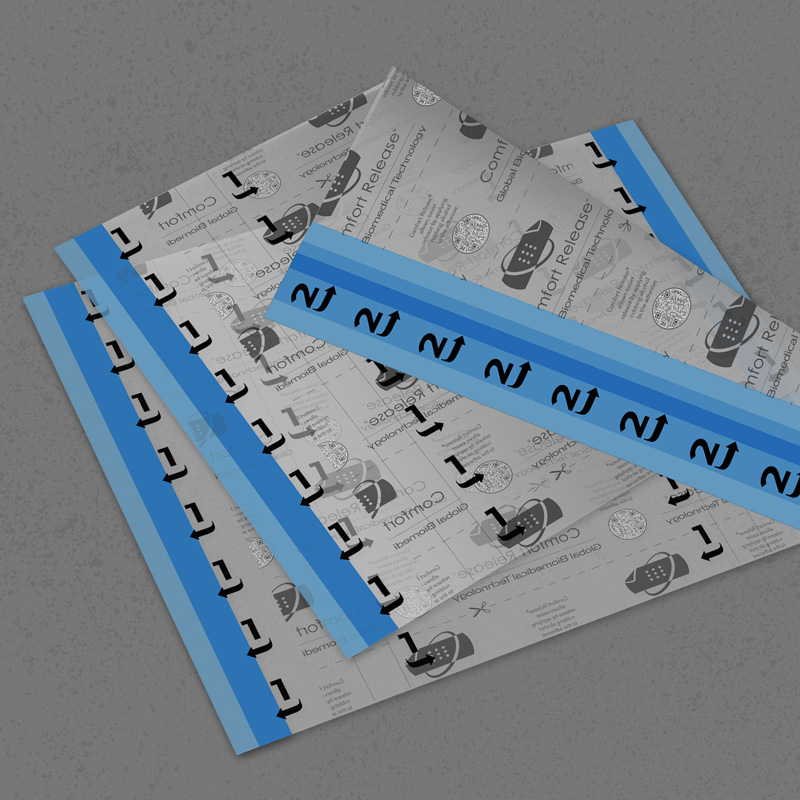Wound Drape

COMFORT RELEASE® Drape
Strong medical grade acrylic ensures a strong and effective seal while Comfort Release® switch allows the drapes to be repositioned upon initial placement and removed painlessly and trauma-free.
The drapes act as a barrier to external contaminants and provides peri-wound protection. The drapes also supports wound healing and improves patient comfort.
Catalog# GB141-A
GB141-A Polybag with 1 Single Drape at 10.25” x 10” (26.03 cm x 25.4 cm)
Not for sale. Caution: INVESTIGATIONAL DEVICE Limited by Federal Law to investigational use only, as part of a clinical study.
GB141-A
GENERAL DIRECTIONS:
Apply drape to dry intact skin, free of lotions, oils, or creams. No protective barrier wipes needed.
DRAPE APPLICATION:
Step 1 / Assess wound. Clean and prepare wound bed and periwound skin per facility protocol.
Step 2 / Apply foam or dressing over the wound bed per the manufacturer‘s directions.
Step 3 / Cut and place the drape to cover foam or dressing, with an additional 1″-2” overlap onto intact peri-wound skin. As you cut the drape, maintain at least one edge with a portion of the blue #2 tab.
Step 4 / Remove layer #1 to expose the adhesive. Place the adhesive side down over wound dressing/foam pad and adjacent skin. Smooth the drape over the skin to prevent creasing.
Step 5 / Remove layer #2. Then pull and remove the remaining handling tabs from the drape at the perforation line. A small portion of the tab remains on the drape (to assist with drape removal). Pat down to assure a good seal.
Step 6 / Follow facility protocol and manufacturer’s directions to complete the application.
Step 7 / Document the procedure and patient’s response to the treatment.
FOR PAINLESS REMOVAL OF THE DRAPE:
Step 1 / Lift and swipe under the residual drape tab with alcohol prep pads or alcohol swab sticks, until the drape lifts easily from the skin. Continue to wet the underside of the drape, where it meets the skin.
Step 2 / Use additional alcohol prep pads or alcohol swab sticks, as needed, to keep the underside edge of the drape wet, to loosen the drape from the skin.
Step 3 / Carefully remove all the foam/dressing pieces from the wound bed. Note the number of pieces removed per facility protocol.
Step 4 / Discard the used drape and foam/dressing pieces per facility protocol.
Step 5 / Document the procedure and patient’s response to the procedure.
REMOVAL NOTE:
Be sure to keep the adhesive edge wet with isopropyl alcohol until the drape portion is removed from the skin. The adhesive bond will return to the drape when the isopropyl alcohol evaporates.
WARNINGS:
Do not use drape if the patient has a known allergy or hypersensitivity to acrylic adhesives or isopropyl alcohol.

